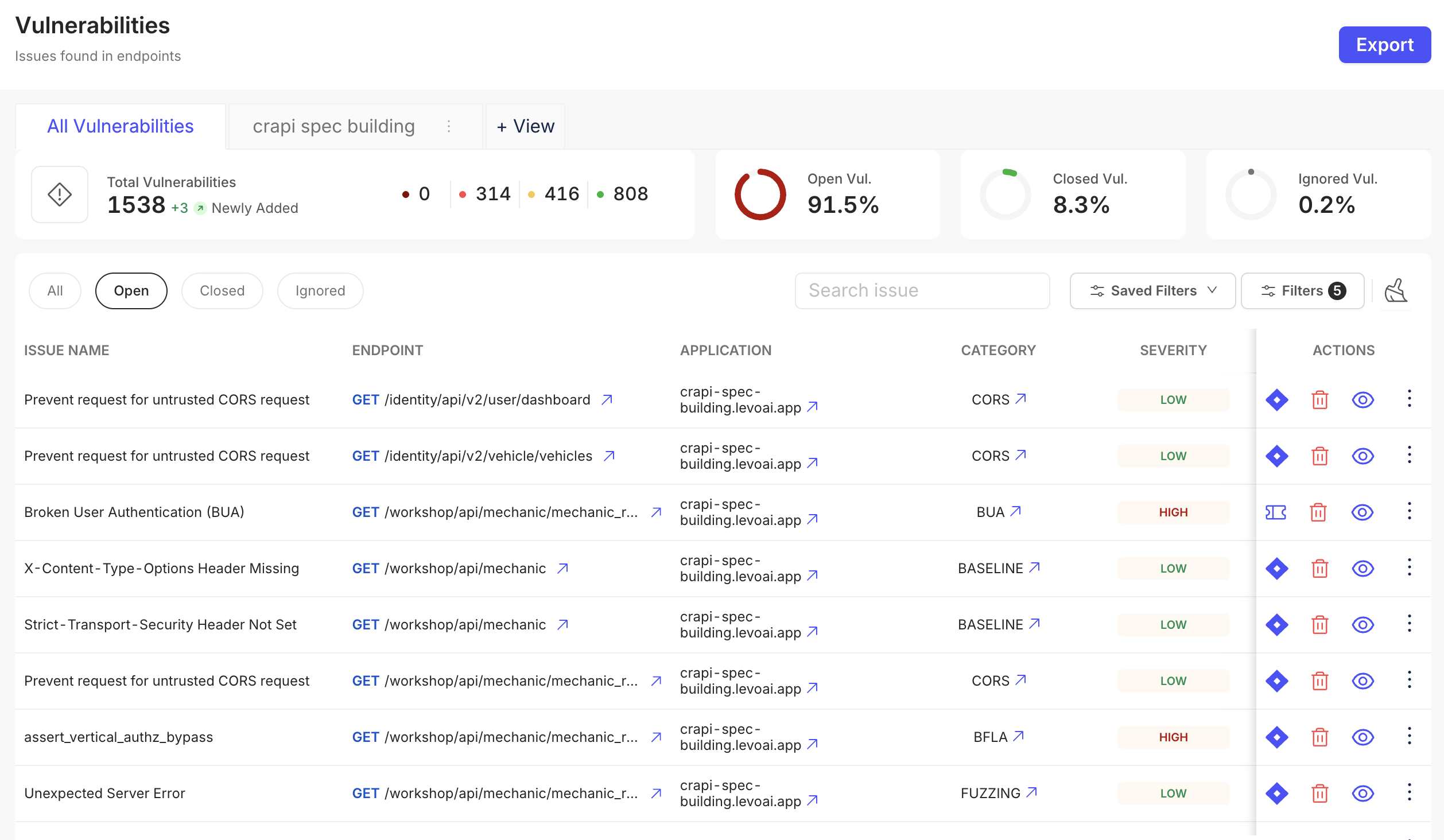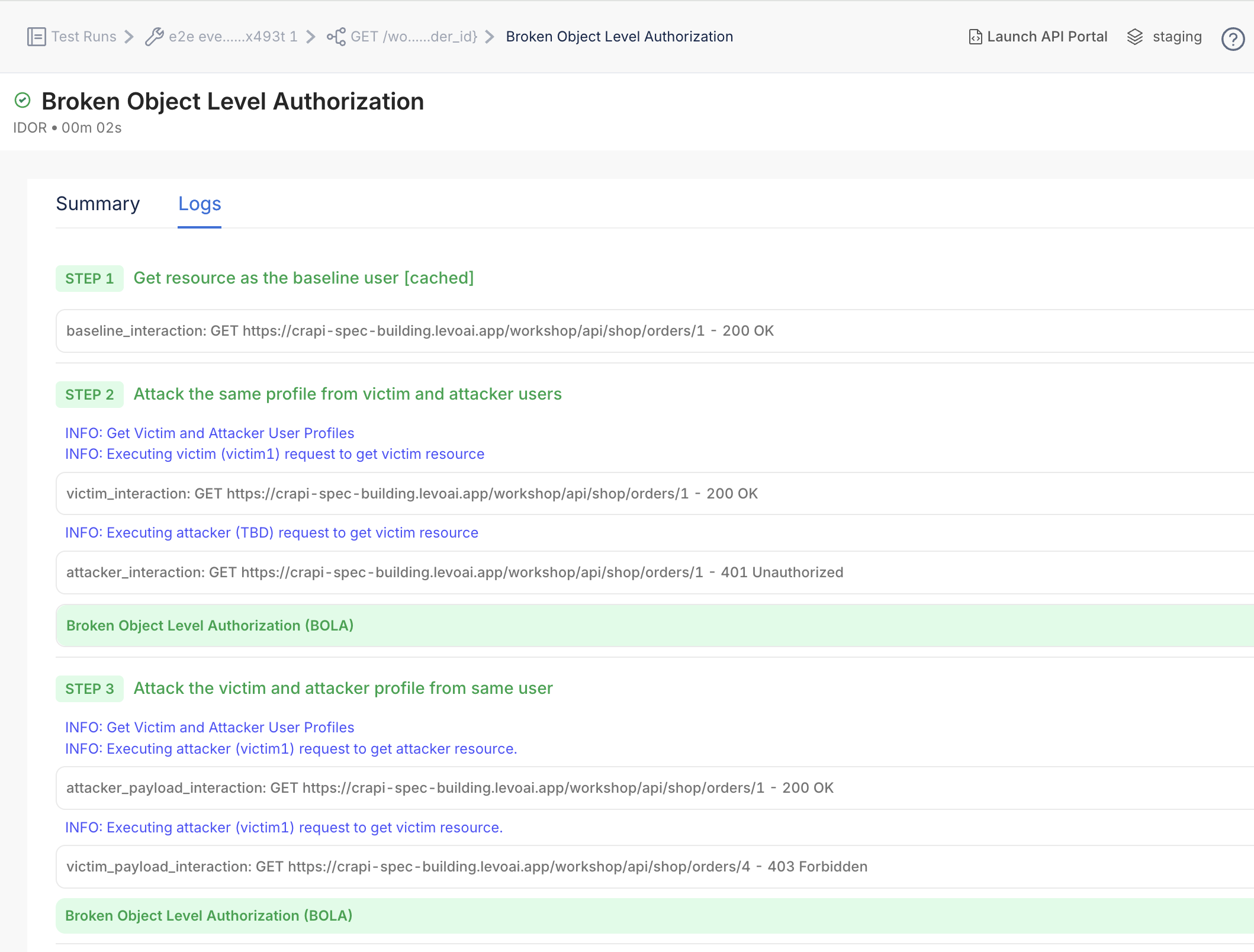Rapidly accelerate insurance digitization
%20(1).png)


%20(1).png)









%20(1).png)








Secure the APIs that power insurance
without slowing the product launches they enable
Complete visibility into the entire API ecosystem
Levo uses eBPF-powered discovery to continuously surface internal, external, partner, and zombie APIs tagged by environment, data sensitivity, and application so no endpoint escapes visibility during rollout.
Protect consent and authorization at runtime
Levo continuously and proactively tests all APIs for AuthN and AuthZ misconfigurations, vertical and horizontal bypass. Detecting broken or missing access controls so they can be remediated before they culminate into compliance violations.
Automate compliance success
Quarterly audits and manual reviews can’t keep up with APIs that change weekly.
Levo classifies PHI, PII, and other sensitive data across every API payload and flow path mapping insecure data exposures in real time for efficient remediation.
Detect security deviations tailored to insurance workflows
Generic threat intel can’t protect against insurance-specific abuse vectors like claim injection, pricing scraper bots, or session token replay.
Launch products faster by embedding security into CI/CD, not around it
Levo integrates directly into CI/CD pipelines, auto-generating attack payloads per API using real schema structure, user context, and auth logic so developers get security validation in pre-prod without waiting on manual sign-off.

Secure every insurance API
without diminishing the speed that makes them valuable
Eliminate API sprawl before it derails Security and Compliance
Levo’s eBPF sensor and other agentless instrumentation methods continuously discover external, internal, third-party, partner, zombie, and open-source APIs across environments without requiring code changes or config rewrites.
Every API is documented with 12+ attributes (versioning, auth method, payload structure, and more), mapped to environments and applications for full visibility.

Catch what DAST, SAST, and pen-tests miss early
Levo’s testing engine generates highly targeted payloads using real user context, schema structure, and access control mechanisms. We security test each API against dozens of categories, including broken object-level authorization (BOLA), vertical / horizontal authZ bypass, and misconfigured scope validation.

Prove compliance with audit ready evidence
Levo classifies sensitive data including PHI, PII, KYC, and claims metadata across all API flows. It identifies endpoints exposing this data without strong authentication or proper masking.
Sensitive data classification is segmented by environment and application, and custom data types can be defined directly through the UI.

Secure partner and embedded APIs without slowing integration velocity
Levo’s real-time monitoring tracks partner API behavior across all environments.
Our policy engine detects and flags 50+ default misconfigurations from token overuse to path-based authorization skips and supports custom policy definitions using Python or YAML.

Governance guardrails that don’t kill dev autonomy
Levo's policy-driven runtime monitoring tracks every API interaction across environments. Flagging unsafe behavior, access control misconfigurations, and policy drift with 50+ built-in detection rules and your own custom ones, authored in Python/YAML.

Secure innovation at the speed digitization & compliance demands




